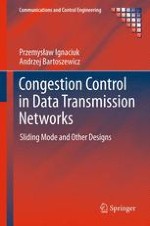2013 | OriginalPaper | Buchkapitel
7. Flow Control in Sampled Data Systems
verfasst von : Przemysław Ignaciuk, Andrzej Bartoszewicz
Erschienen in: Congestion Control in Data Transmission Networks
Verlag: Springer London
Aktivieren Sie unsere intelligente Suche, um passende Fachinhalte oder Patente zu finden.
Wählen Sie Textabschnitte aus um mit Künstlicher Intelligenz passenden Patente zu finden. powered by
Markieren Sie Textabschnitte, um KI-gestützt weitere passende Inhalte zu finden. powered by
